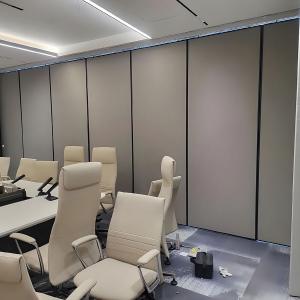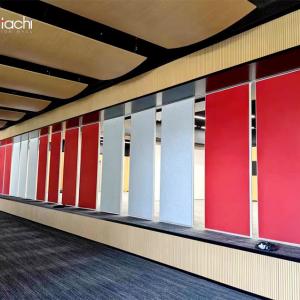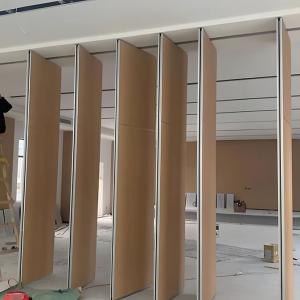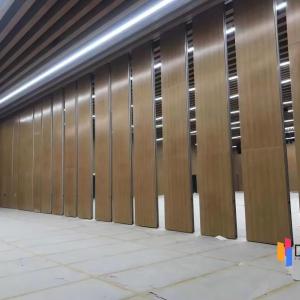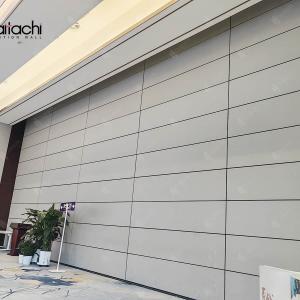When purchasing partition wall movable , it's essential to consider multiple parameters to ensure the selected option meets your actual needs and performs well. Here are some key factors to keep in mind:
1. Material
Glass Partitions: Commonly used in modern office environments, glass partitions offer high transparency and aesthetic appeal. They come in single, double, or even triple-layer varieties, with double or hollow glass providing superior sound insulation and thermal performance.
Metal Partitions: Made from materials like aluminum or steel, these acoustic movable wall partitions are robust and fire-resistant, making them suitable for areas with higher safety requirements.
Wooden Partitions: Offering a warm, natural look, wooden partitions are great for creating a cozy office environment. However, their soundproofing and fire resistance may be less effective compared to other materials.
Lightweight Partition Walls: Options such as drywall or cement boards are easy to install and cost-effective but typically offer average sound insulation.
2. Thickness
Wall Thickness: The thickness of room operable partition walls foldable varies by material. For example, glass partitions usually range from 10mm to 12mm, while lightweight steel frame partitions often measure 75mm or 100mm.
Glass Spacing: For hollow glass partitions, the space between panels generally ranges from 20mm to 27mm, which impacts their soundproofing and insulation capabilities.
3. Sound Insulation Performance
4. Thermal Insulation
Thermal insulation is another important feature of room divider screen. Hollow glass partitions usually excel in this area due to their unique structure. The thermal transmittance coefficient (K-value) is a key indicator of thermal performance—the lower the K-value, the better the insulation.
5. Sunlight Control and Lighting
For spaces that require light adjustment and shading, consider temporary wall divider equipped with blinds or adjustable shading systems. The width, thickness, and adjustment range of the blinds can significantly influence their shading effectiveness and overall appearance.
6. Safety Features
Fire Resistance: Pay particular attention to the fire ratings and resistance times of metal and wooden partitions.
Stability and Load-Bearing Capacity: Ensure that the acoustic room divider can withstand weight and impacts during use without damage.
7. Design and Style
The design of the partitions should harmonize with the overall decor style. Modern and minimalist office environments benefit from partitions with clean lines and vibrant colors, while traditional or classic settings may call for designs that incorporate cultural elements.
Customization: Many Movable Partition Walls for office offer customization options, allowing adjustments to dimensions, colors, and patterns based on specific needs.
8. Price and Cost-Effectiveness
Prices vary depending on material, brand, size, and design complexity. It’s important to balance cost with performance to choose products that offer good value for your investment.
Conclusion
In summary, when selecting temporary movable walls, consider material, thickness, sound insulation, thermal performance, sunlight control, safety features, design compatibility, and price-to-performance ratio. By thoroughly evaluating these parameters, you can choose moveable divider wall that not only meet your practical requirements but also deliver excellent performance.
1. Material
Glass Partitions: Commonly used in modern office environments, glass partitions offer high transparency and aesthetic appeal. They come in single, double, or even triple-layer varieties, with double or hollow glass providing superior sound insulation and thermal performance.
Metal Partitions: Made from materials like aluminum or steel, these acoustic movable wall partitions are robust and fire-resistant, making them suitable for areas with higher safety requirements.
Wooden Partitions: Offering a warm, natural look, wooden partitions are great for creating a cozy office environment. However, their soundproofing and fire resistance may be less effective compared to other materials.
Lightweight Partition Walls: Options such as drywall or cement boards are easy to install and cost-effective but typically offer average sound insulation.
2. Thickness
Wall Thickness: The thickness of room operable partition walls foldable varies by material. For example, glass partitions usually range from 10mm to 12mm, while lightweight steel frame partitions often measure 75mm or 100mm.
Glass Spacing: For hollow glass partitions, the space between panels generally ranges from 20mm to 27mm, which impacts their soundproofing and insulation capabilities.
3. Sound Insulation Performance
Sound insulation is a critical consideration when choosing temporary partition walls. Generally, double or hollow glass partitions provide better sound insulation compared to single-layer options. Reviewing product soundproofing test reports or consulting sales representatives can give insight into specific performance metrics.
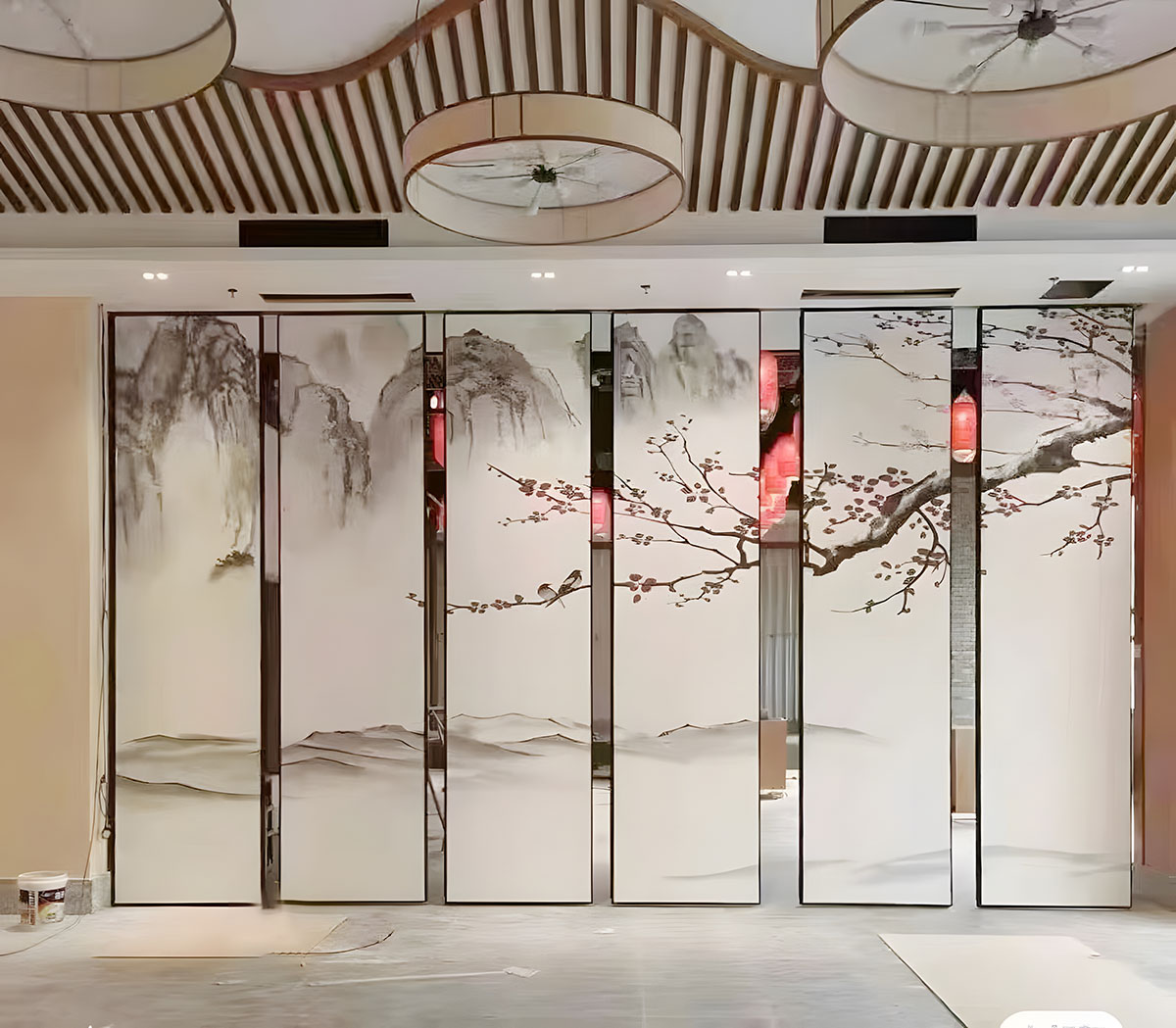
4. Thermal Insulation
Thermal insulation is another important feature of room divider screen. Hollow glass partitions usually excel in this area due to their unique structure. The thermal transmittance coefficient (K-value) is a key indicator of thermal performance—the lower the K-value, the better the insulation.
5. Sunlight Control and Lighting
For spaces that require light adjustment and shading, consider temporary wall divider equipped with blinds or adjustable shading systems. The width, thickness, and adjustment range of the blinds can significantly influence their shading effectiveness and overall appearance.
6. Safety Features
Fire Resistance: Pay particular attention to the fire ratings and resistance times of metal and wooden partitions.
Stability and Load-Bearing Capacity: Ensure that the acoustic room divider can withstand weight and impacts during use without damage.
7. Design and Style
The design of the partitions should harmonize with the overall decor style. Modern and minimalist office environments benefit from partitions with clean lines and vibrant colors, while traditional or classic settings may call for designs that incorporate cultural elements.
Customization: Many Movable Partition Walls for office offer customization options, allowing adjustments to dimensions, colors, and patterns based on specific needs.
8. Price and Cost-Effectiveness
Prices vary depending on material, brand, size, and design complexity. It’s important to balance cost with performance to choose products that offer good value for your investment.
Conclusion
In summary, when selecting temporary movable walls, consider material, thickness, sound insulation, thermal performance, sunlight control, safety features, design compatibility, and price-to-performance ratio. By thoroughly evaluating these parameters, you can choose moveable divider wall that not only meet your practical requirements but also deliver excellent performance.
